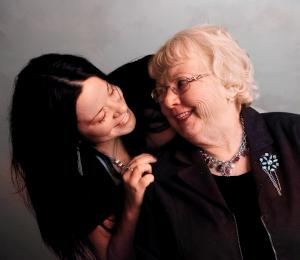The Path to Healing

Forgiveness is a powerful tool for healing, but forgiving a family member can be one of the most challenging tasks we face. Family relationships are deeply intertwined with our emotions, memories, and identities, making it difficult to let go of hurt and resentment. However, holding onto grudges only perpetuates pain and hinders our own emotional well-being. Learning how to fully forgive a family member is a transformative journey that requires patience, empathy, and self-reflection. Here are some steps to guide you along the path to forgiveness:
- Acknowledge Your Feelings: Before you can begin the process of forgiveness, it’s important to acknowledge and validate your feelings of anger, betrayal, or hurt. Denying or suppressing these emotions only prolongs the healing process. Allow yourself to experience and express your emotions in a healthy way, whether through journaling, talking to a trusted friend, or seeking therapy.
- Understand the Impact: Take time to reflect on how the actions of your family member have affected you and your relationship. Consider the underlying factors that may have contributed to their behavior, such as past trauma, unmet needs, or misunderstandings. Understanding the context can help cultivate empathy and compassion, making it easier to forgive.
- Set Boundaries: Forgiveness does not mean condoning or excusing harmful behavior. It’s important to establish boundaries to protect yourself from further harm and ensure that the same patterns are not repeated. Clearly communicate your boundaries to your family member in a respectful and assertive manner.
- Practice Empathy: Put yourself in the shoes of your family member and try to see the situation from their perspective. Recognize that they, too, may be struggling with their own pain and insecurities. Empathy can foster understanding and pave the way for forgiveness.
- Let Go of Resentment: Holding onto resentment only keeps you tethered to the past and prevents you from moving forward. Release the burden of resentment by consciously choosing to let go of negative thoughts and emotions. This doesn’t mean forgetting or minimizing the hurt, but rather freeing yourself from its grip.
- Focus on Self-Healing: Forgiveness is as much about healing yourself as it is about repairing the relationship. Invest time and energy into self-care activities that nurture your physical, emotional, and spiritual well-being. Engage in hobbies, practice mindfulness, and surround yourself with supportive people who uplift and encourage you.
- Practice Forgiveness Rituals: Engage in forgiveness rituals or practices that resonate with you, such as writing a letter of forgiveness (even if you never send it), meditation, or forgiveness prayers. These rituals can help solidify your intention to forgive and let go of resentment.
- Communicate and Rebuild Trust: If you choose to reconcile with your family member, open and honest communication is essential. Express your feelings and concerns, and listen to their perspective with an open heart. Rebuilding trust takes time and effort, so be patient and consistent in your efforts to repair the relationship.
- Seek Support: Forgiveness is a journey that can be challenging to navigate alone. Lean on the support of friends, family members, or a therapist who can offer guidance, empathy, and encouragement along the way.
- Embrace Imperfection: Forgiveness is not a linear process, and setbacks are inevitable. Be gentle with yourself and allow yourself the grace to experience setbacks and moments of doubt. Progress may be slow and gradual, but every step towards forgiveness is a step towards healing.
In conclusion, forgiving a family member is a deeply personal and transformative journey that requires courage, compassion, and resilience. By acknowledging your feelings, practicing empathy, setting boundaries, and focusing on self-healing, you can release the grip of resentment and cultivate a sense of peace and liberation. Remember that forgiveness is a gift you give yourself, freeing you from the burden of the past and opening the door to a brighter, more harmonious future.
Read More













